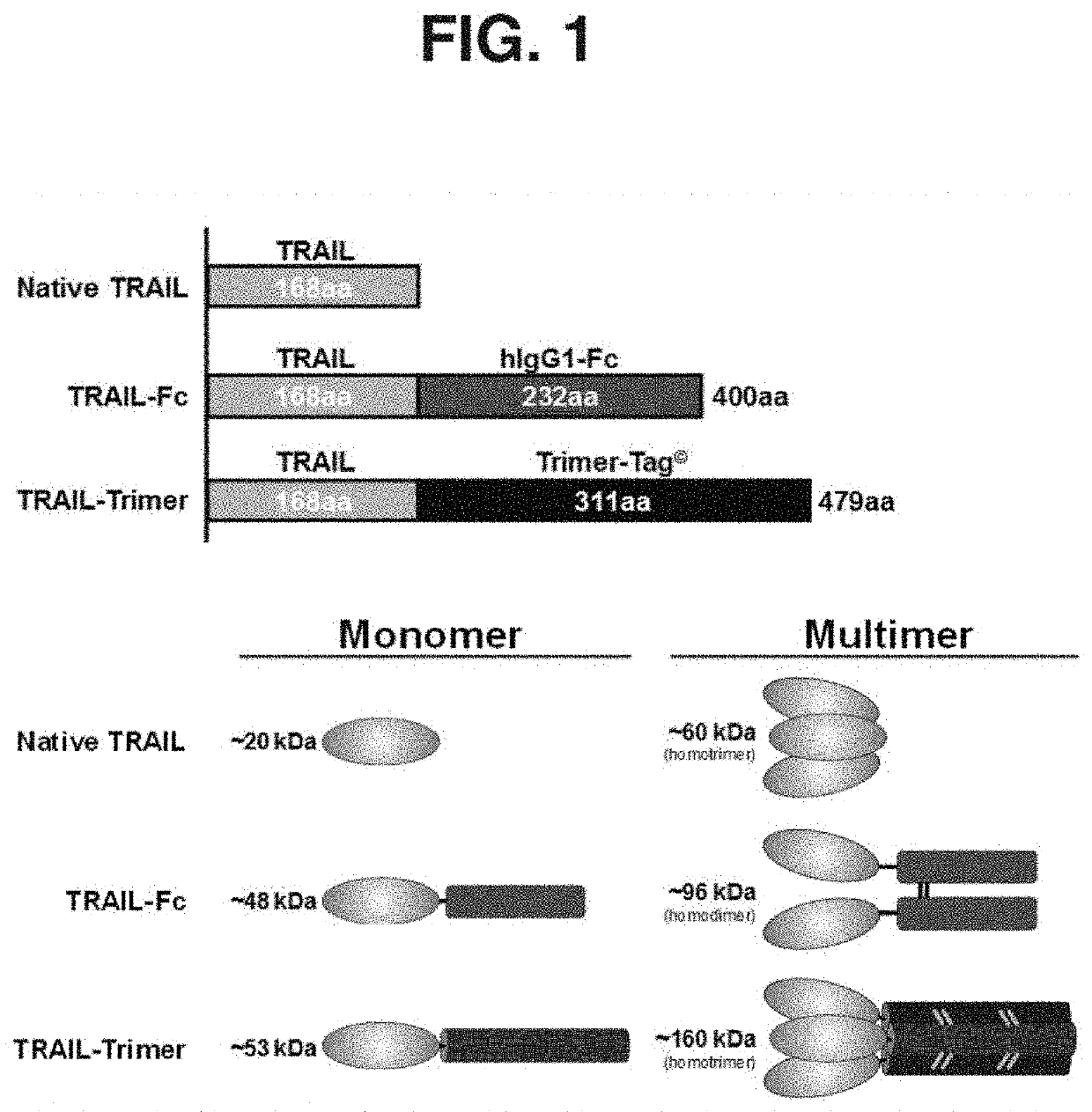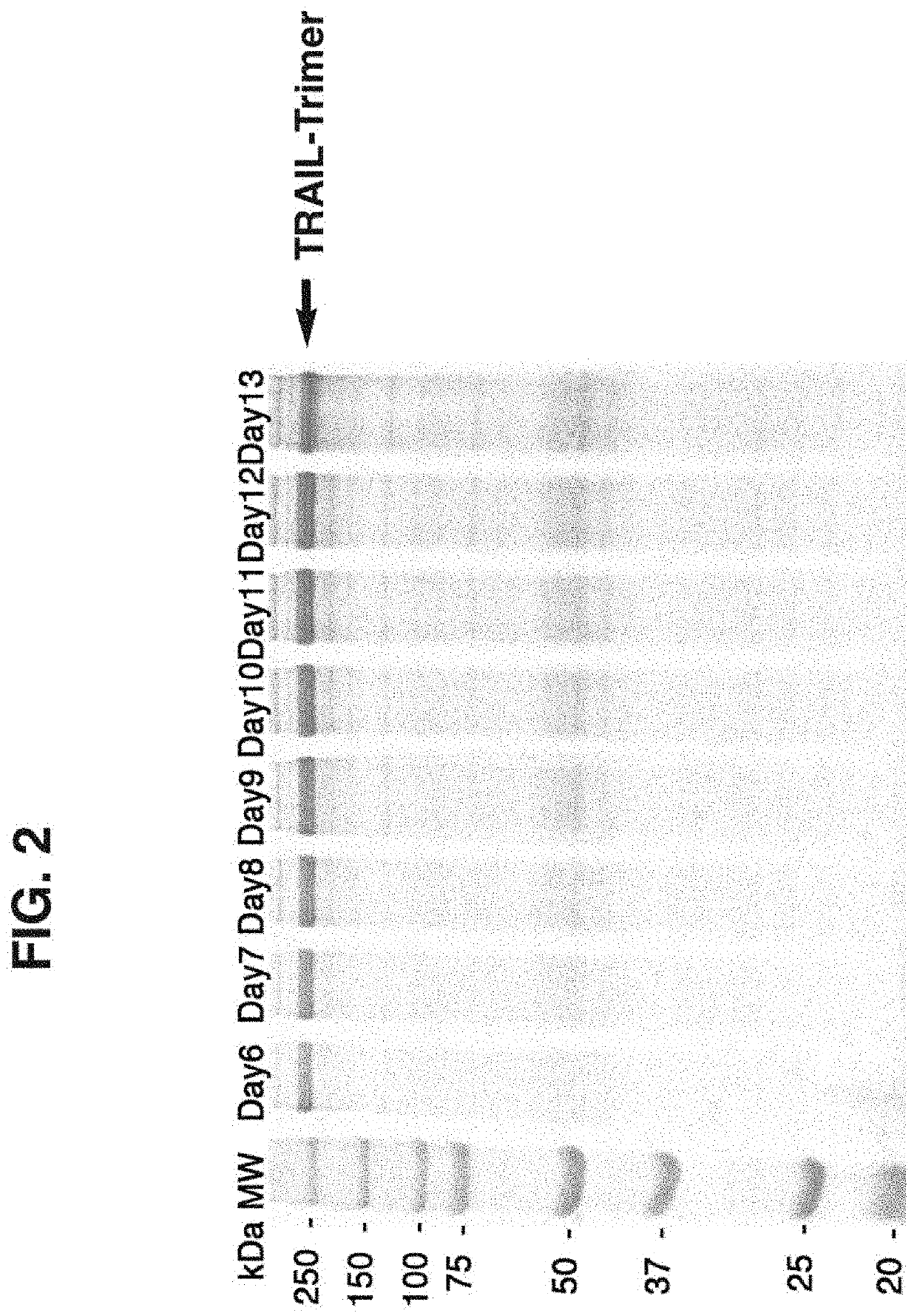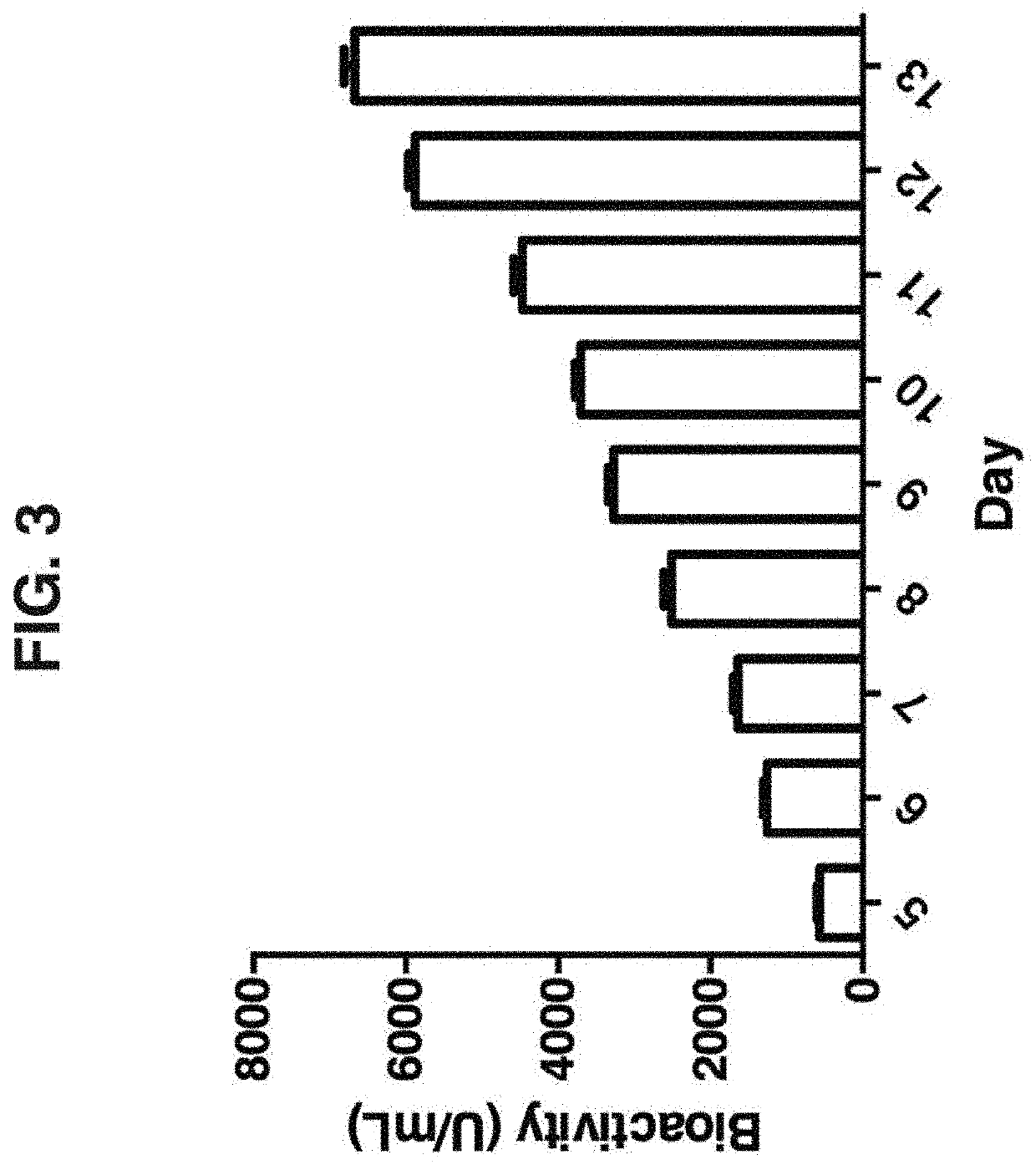Method and Compositions for Producing Disulfide-Linked Trimeric TNF Family of Cytokines and Their Use
a technology of tnf family and cytokine, which is applied in the field of protein expression, can solve the problems of poor pharmacokinetic profile, toxic overexpression of tnf- and fasl, and abnormal production of certain tnf family of cytokine, and achieves the effects of less leakage, increased molecular weight, and less leakag
- Summary
- Abstract
- Description
- Claims
- Application Information
AI Technical Summary
Benefits of technology
Problems solved by technology
Method used
Image
Examples
example 1
n, Purification and Functional Characterization of TRAIL-Trimer
[0078]Thus, trimerization via covalent bond-linkage may stabilize TRAIL / Apo2L trimeric structure essential for its biological activity as well as increase the molecular weight in order to extend half-life for improved antitumor efficacy in vivo. In this study, we show that in-frame fusion of human C-propeptide of α1(I) collagen (dubbed Trimer-Tag) to the C-terminus of mature human TRAIL leads to a disulfide bond-linked homotrimer (FIG. 1). TRAIL-Trimer (designated SCB-313) was encoded by cDNA a sequence with the following coding sequences fused in tandem: Promoter-Signal peptide-Mature TRAIL-“Trimer-Tag”. The cDNA sequence encoding the mature human TRAIL (aa 114-281 of full length human TRAIL protein) was either PCR amplified or gene synthesized and cloned into the pTrimer-T0(M) vector between HindIII and BglII sites to allow in-frame fusion with the C-prodomain of human type I () collagen with a mutated BMP-1 site and s...
example 2
n, Purification and Functional Characterization of 4-1BBL-Trimer
[0088]Immunotherapy is a rapidly expanding field in oncology, which mobilizes one's own immune system to combat the cancerous lesions. Although immune-checkpoint inhibitors such as anti-PD-1 and anti-PD-L1 antibodies have generated much excitement in “curing” certain type of deadly cancer, the relatively low response rates in the range of 15-30% indicate a need for further improvement. Of the many approaches currently under studying to boost anti-tumor immune responses, modulation of immune co-stimulatory receptors on lymphocytes in the tumor microenvironment has thus far proven to be the most promising. Lymphocytes require two signals for optimal activation T-cell receptor (TCR) ligation and costimulation. Costimulation provides an independent stimulus that influences the outcome of the interaction between T cells and antigen-presenting cells (APC). Without costimulation antigen primed T cells will undergo apoptosis or...
example 3
n, Purification and Functional Characterization of OX40L-Trimer
[0091]Since OX40L has similar biological functions as 4-1BBL, we also produced OX40L-Trimer following the same strategy. The secreted mature OX40L-Trimer with signal peptide cleaved has an amino acid sequence specified as either SEQ ID NO 5 or SEQ ID NO 6.
PUM
| Property | Measurement | Unit |
|---|---|---|
| molecular weight | aaaaa | aaaaa |
| concentration | aaaaa | aaaaa |
| concentration | aaaaa | aaaaa |
Abstract
Description
Claims
Application Information
 Login to View More
Login to View More - R&D
- Intellectual Property
- Life Sciences
- Materials
- Tech Scout
- Unparalleled Data Quality
- Higher Quality Content
- 60% Fewer Hallucinations
Browse by: Latest US Patents, China's latest patents, Technical Efficacy Thesaurus, Application Domain, Technology Topic, Popular Technical Reports.
© 2025 PatSnap. All rights reserved.Legal|Privacy policy|Modern Slavery Act Transparency Statement|Sitemap|About US| Contact US: help@patsnap.com



